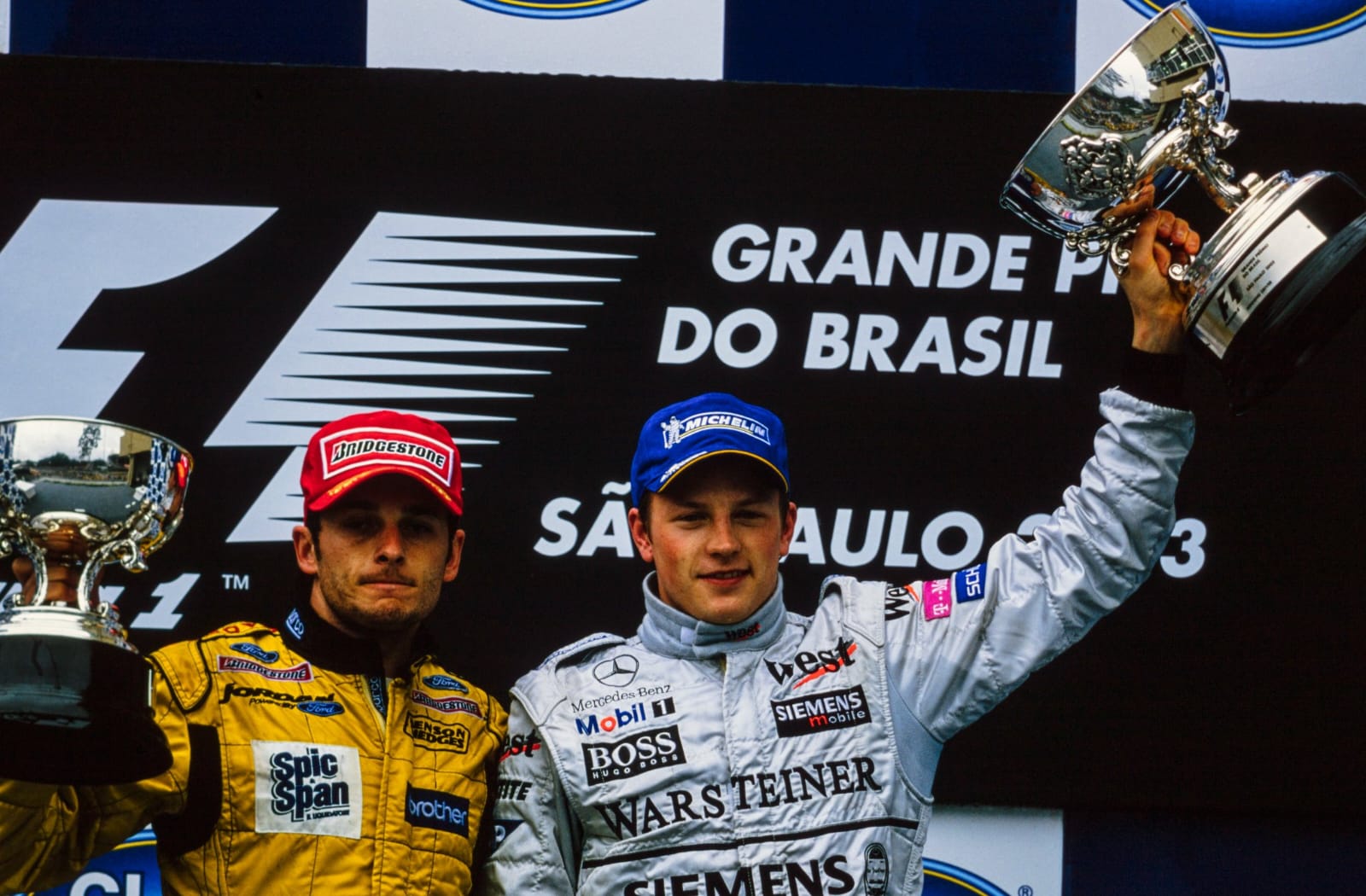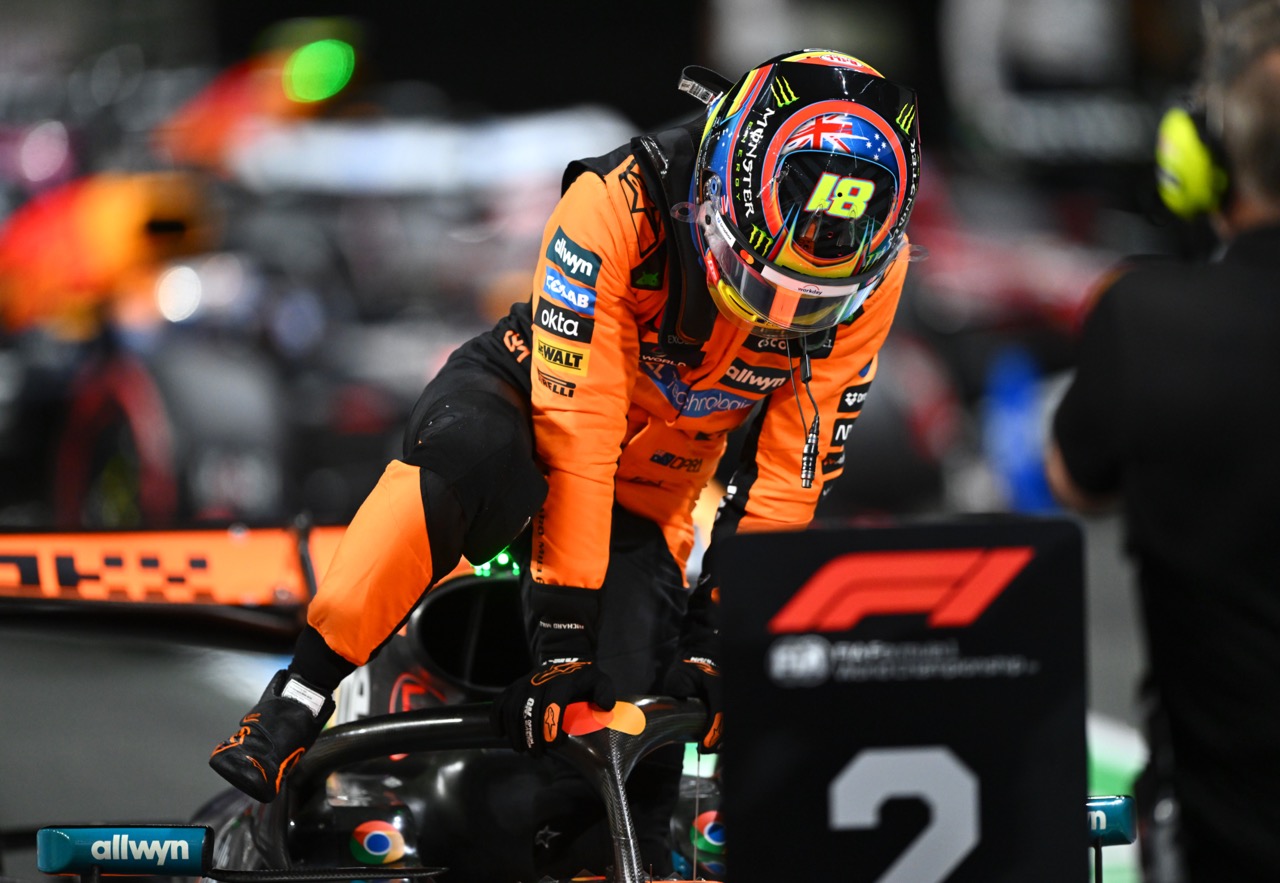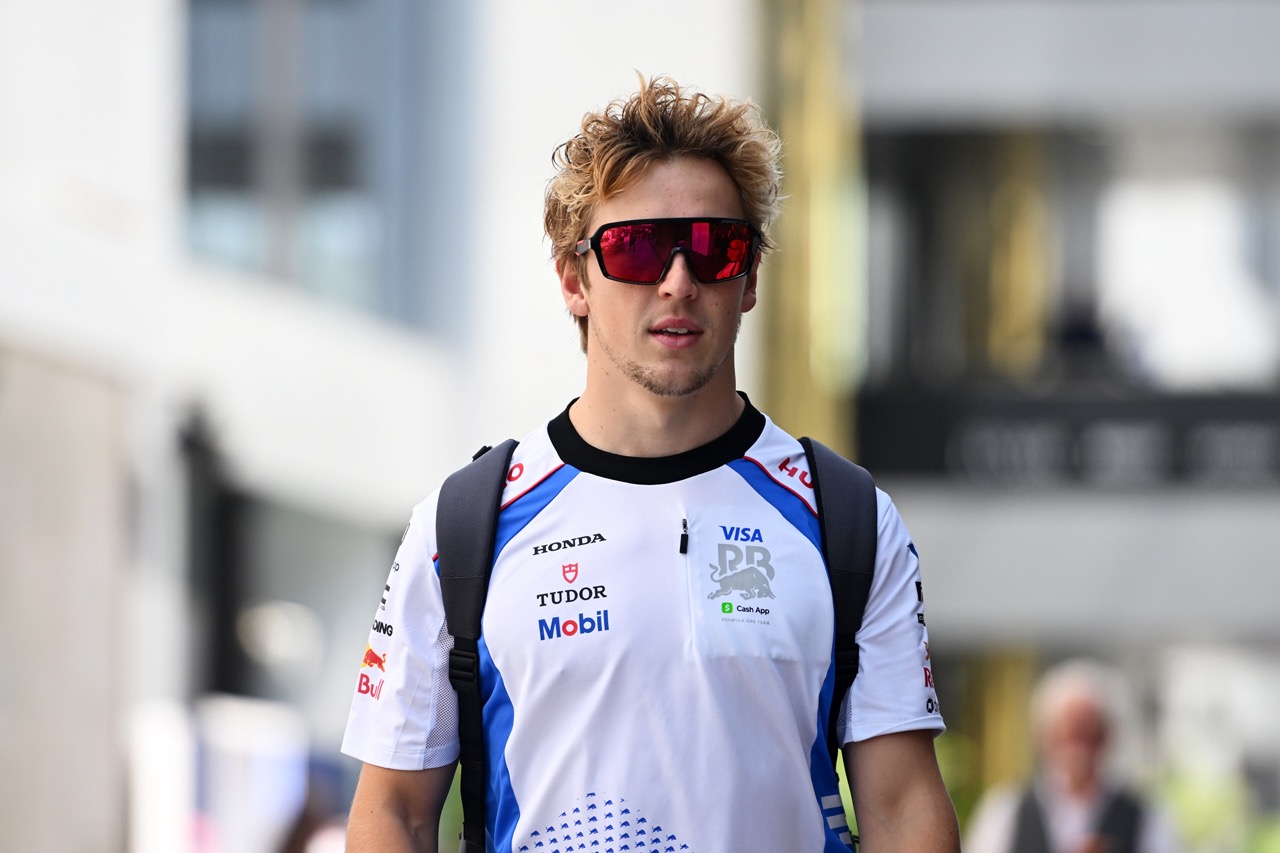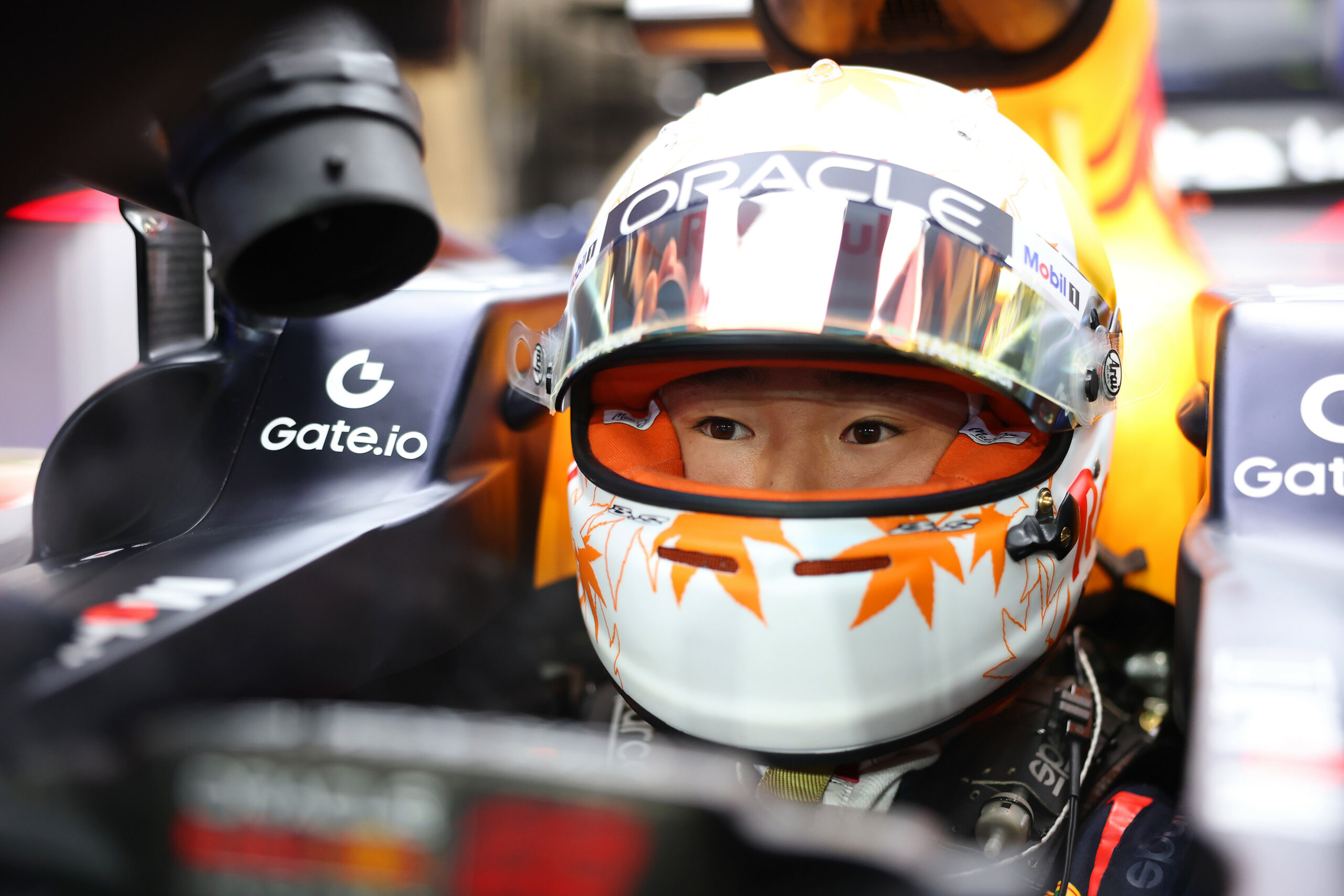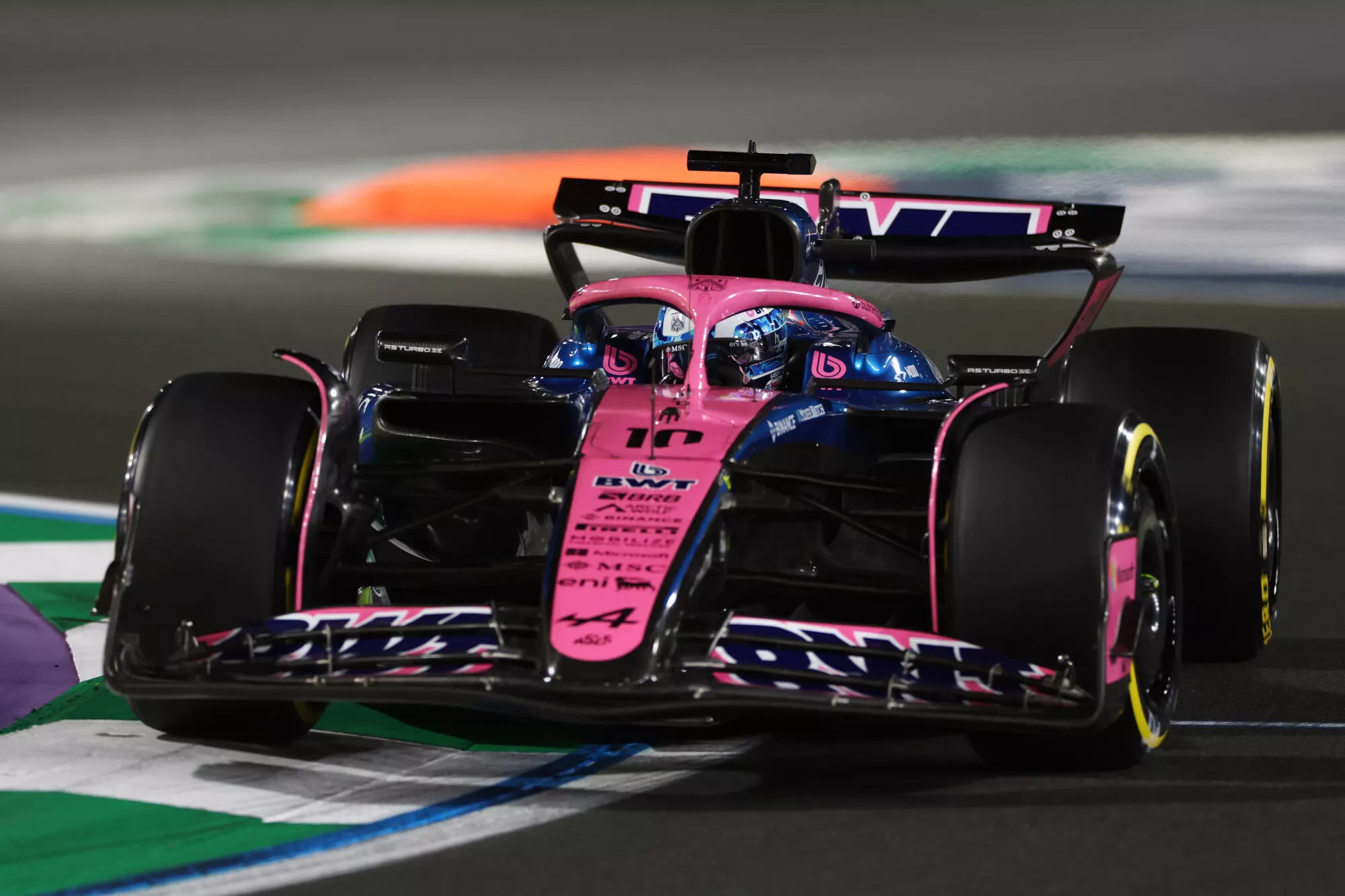With the news of Eddie Jordan‘s unfortunate passing shaking the Formula 1 paddock, it is important to remember his greatest accolades and Jordan F1’s final victory with Giancarlo Fisichella at the 2003 F1 Brazilian Grand Prix was just the last of many unexpected achievements that encapsulated his team’s underdog story.
The charismatic one-of-a-kind Formula 1 figure passed away last Thursday at the age of 76 after suffering with aggressive prostate cancer. Eddie Jordan tried his hand at many Formula 1 endeavours across his life, but perhaps his most memorable were the 15 seasons he spent overseeing his very own Jordan F1 team.
From 1991-2005, the Silverstone-based team racing under an Irish licence claimed four Grand Prix victories, showed off many a flamboyant livery and handed Michael Schumacher his debut at the 1991 F1 Belgian Grand Prix.
Lawrence Stroll’s acquisition of the team in 2019 did not transfer the FIA entry, but Eddie Jordan and his team’s legacy continues to thrive through the Aston Martin team two decades later. At last week’s Chinese Grand Prix, the team added Eddie Jordan’s name and a clover to their cars’ rear wing and body to honour the team’s origin story.
The 2003 F1 Brazilian Grand Prix was Jordan’s 200th Grand Prix as a constructor and would be their final hurrah on a Formula 1 top-step.
Where were we at Interlagos 2003?
Coming into the third round of the 2003 Formula 1 World Championship, Kimi Raikkonen’s McLaren-Mercedes was the championship leader and Michael Schumacher was facing criticism after a tricky start to his fifth title defence. The Finn had won his first Grand Prix last time out in Malaysia.
Four seasons on from their 1999 third place World Constructors’ Championship finish, Jordan were struggling on and off track as the EJ13 was the ninth quickest car and the financial pressure was looming.
Brazilian driver Rubens Barichello started the 700th World Championship Grand Prix on pole position with a qualifying lap time of 1:13:807 in his Ferrari, just 0.011 seconds ahead of David Coulthard’s McLaren-Mercedes in second.
The Jordan Fords qualified in eighth for Giancarlo Fisichella and 16th for Ralph Firman, but the Irishman started from the pit-lane as Jordan topped him up with fuel.
Rain had dominated the weekend coming into Sunday and it looked like the Bridgestone Intermediates and Michelin full wets would continue to be key strategic talking points throughout the race.
Behind the safety car
With a torrential downpour flooding the starting grid on Sunday afternoon, the FIA race director at the time Charlie Whiting delayed the start of the race by 15 minutes.
The risk of aquaplaning was too high and the race started behind the safety car with all drivers on wet-weather tyres.
Whilst behind the safety car, some drivers, including Fisichella, made what they hoped would be their only pit-stop as they re-fuelled looking to make it to the end of the race.
Going green
The race was green flagged at the end of lap eight, but Barichello’s attempt to bunch the pack up for the restart backfired as Coulthard sent his McLaren down the inside of the Brazilian into the Senna S chicane to take the lead of the race. Meanwhile, Nick Heidfeld’s Sauber suffered an oil leak causing him to retire from the race.
One lap after the restart, the Michelin tyres were already faring better than the Bridgestones which aided Raikkonen who made a move past Barichello, making it a McLaren one-two.
But it was the Colombian Juan Pablo Montoya in his Williams-BMW who was flying as he also past Barichello and chased down the two McLarens after starting the restart from eighth.
Raikkonen and Montoya both subsequently passed the leading Scot to seemingly take command of the race in first and second.
However, Schumacher was fighting his way through the field as his expertly anticipated wet-weather set-up enabled him to pass Mark Webber’s Jaguar and Montoya’s Williams.
Debris and turn three
On lap 17, the race saw its first major incident as Firman’s Jordan spun out of control going into turn one, with suspected suspension failure, and ran straight into the back of Olivier Panis’ Toyota, shattering the Frenchman’s rear wing. Both retried from the race, but the debris was insurmountable and the safety car was back out once again.
On the restart, more chaos ensued as the previously impressive Montoya and Brazilian Antonio Pizzonia aquaplaned off into the barrier at turn three in bizarre separate incidents. Just two laps later, Schumacher’s Ferrari surprisingly joined them, becoming the third driver to aquaplane into the wall at turn three and retire from the race. It was a nasty incident for the German as he only narrowly avoided Pizzonia’s stricken Jaguar and the tractor that was clearing the Brazilian’s car away.
The FIA had to call out the third safety car of the race as turn three became an area of extreme caution for the 13 drivers remaining in the Grand Prix.
Despite that, turn three took another victim after the restart on lap 30 as Jos Verstappen lost control of his Minardi and retired with an engine issue.
Just two laps later, Jenson Button also found himself crashing his BAR Honda into the barrier at the now infamous turn three.
These incidents left a picturesque image of five destroyed Formula 1 cars on the outside of turn three as the river running across the long left-hander had clearly caught out experienced and inexperienced drivers alike.
The racing itself
One driver who didn’t seem deterred by the drenched Interlagos circuit was Raikkonen, only 23 at the time, as he fought his way back to third after a late pit stop had left him down the pecking order. This charge through the field included a fearless overtake on Fernando Alonso’s Renault and a stunning move around the outside of Ralf Schumacher’s Williams at Descida do Lago.
In a midst of the aforementioned turn three carnage, Coulthard once again had his McLaren in the lead of the race with polesitter Barichello looking to score his first ever home victory in second.
On lap 44, Coulthard made a mistake at turn one as he slid wide and, with Barichello only two tenths behind, the Brazilian put his Ferrari back to where it started the race.
However, on lap 46, a chorus of groans echoed through the city of Sao Paulo as Barichello retired from the lead of the race due to a lack of fuel, leaving only ten drivers still running.
An opportunistic Jordan
With Coulthard pitting and Raikkonen struggling in the inherited lead of the race, Fisichella saw an opportunity at his maiden F1 Grand Prix victory. On lap 54, he overtook the Finn on the inside of Murgulho. The Italian and his Jordan were now the fifth different driver to lead the Brazilian Grand Prix.
Whilst that was going on, the race saw its two largest accidents of the afternoon as first Webber would spin his Jaguar at high-speed into the barrier at the start of the start/finish straight, losing wheels and cascading debris across the track.
Alonso arrived at the scene at high-speed and collided with one of Webber’s stricken tyres in the middle of the track. The Spaniard was merely a passenger and had a huge collision with the barrier just after turn 14. He struggled for breath and had to briefly take a seat by the track wall to recover.
This horrifying incident brought out the red flag, halting all racing on lap 54 out of 71. 12 of the 20 drivers who started the Brazilian Grand Prix either crashed or retired from mechanical issues.
What happened next?
Since 75% of the race had been completed when the red flag was called, the race was officially ended. This would mean Fisichella was the winner as he had overtaken Raikkonen just before Webber’s initial accident.
In parc ferme, Fisichella’s Jordan caught fire and so did his winning celebrations. This was because, on countback, the race was reverted to lap 53, making Raikkonen’s McLaren the winner.
However, after the race, Whiting and the FIA were concerned over a possible timing error. They held a hearing in Paris, five days later, and discovered that a timekeeping discrepancy had been made which meant Fisichella who was in the lead on lap 54 should’ve been declared the winner.
The race result was revised and Fisichella claimed his first Formula 1 victory and Jordan F1’s last in their 200th Grand Prix. It was also the first win by an Italian since Riccardo Patrese at the 1992 F1 Japanese Grand Prix.
For the engine manufacturers, it was also Ford’s first victory since Johnny Herbet’s Stewart Ford at the 1999 F1 European Grand Prix at the Nürburgring. It is also their most recent P1 finish, but they will be hoping to change that when they begin their partnership with Red Bull Racing from 2026 onwards.
At the next race in Imola, Raikkonen and Ron Dennis handed over the winner’s silverware to Fisichella and Eddie Jordan.
Fisichella’s review
When speaking to BBC Sport over ten years later about his greatest F1 race, Fisichella said: “It was the 2003 Brazilian Grand Prix. Why? because it was my first win, it was unexpected and it was very difficult.
“They were very difficult conditions and it was hard to keep the car on track. Many people ended up going off, but I managed to stay on.
“It was a fantastic moment because for one thing, at the time the Jordan was not a winning car and in difficult conditions I managed to win in the end, even if it was unexpected.”
Fisichella to BBC Sport on how he first felt after the chequered flag: “I felt really upset because I was sure it was our moment. Sure, even to finish second at that time was unexpected, but I was convinced I’d won so I had a bitter taste in my mouth.”
“Above all it was disappointing that I was unable to celebrate my first win on the podium. Imagine how nice that would have been. But the reality was I had won.”
Eddie Jordan on his team’s final F1 victory
Two years ago, Eddie Jordan spoke with Motor Sport Magazine on his team’s final victory, he said: “The race? It was a total carnage.
“I was kind of overjoyed, but furious at the same time. I had to bring it to the FIA to appeal it.
“At the time, they’d followed protocol and manually moved the results back one lap from what was on the telemetry, but the computers had already done this for them – it was already accounted for in the system. The win was rightfully ours.
“I had to fight with the FIA. Obviously, there was a big rigmarole. Max (Mosely) didn’t want to hear the appeal, but he had to.”
On Fisichella, Eddie Jordan told Motor Sport Magazine: “Fisi had good times and bad times with us. I adored the guy.
“The Fisi thing in Brazil, in my opinion, was a fair amount of luck. But we were in a position to take a bit of luck because we’d already pre-planned it as much as we could do.
“What I loved about the team was that we were small, but we all knew what was going on in the race, because we all talked about it beforehand.
“Those days were wild, crazy and good fun.”

